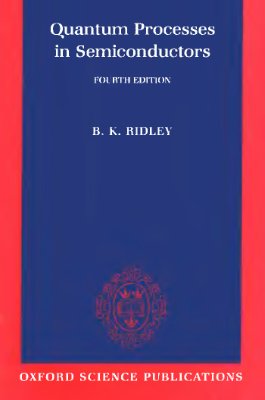1999. - 436 p.
This book, then, is written primarily for the postgraduate student and the experimentalist. It attempts to set out the theory of those basic quantum-mechanical processes in homogeneous semiconductors which are most relevant to applied semiconductor physics. Therefore the subject matter is concentrated almost exclusively on electronic processes. Thus no mention is made of phonon-phonon interactions, nor is the optical absorption by lattice modes discussed. Also, because I had mainstream semiconductors like silicon and gallium arsenide in mind, the emphasis is on crystalline materials in which the electrons and holes in the bands obey non-degenerate statistics, and little mention is made of amorphous and narrow-gap semiconductors. Only the basic quantum-mechanics is discussed; no attempt is made to follow detailed applications of the basic theory in fields such as hot electrons, negative-differential resistance, acousto-electric effects, etc.
This book, then, is written primarily for the postgraduate student and the experimentalist. It attempts to set out the theory of those basic quantum-mechanical processes in homogeneous semiconductors which are most relevant to applied semiconductor physics. Therefore the subject matter is concentrated almost exclusively on electronic processes. Thus no mention is made of phonon-phonon interactions, nor is the optical absorption by lattice modes discussed. Also, because I had mainstream semiconductors like silicon and gallium arsenide in mind, the emphasis is on crystalline materials in which the electrons and holes in the bands obey non-degenerate statistics, and little mention is made of amorphous and narrow-gap semiconductors. Only the basic quantum-mechanics is discussed; no attempt is made to follow detailed applications of the basic theory in fields such as hot electrons, negative-differential resistance, acousto-electric effects, etc.

